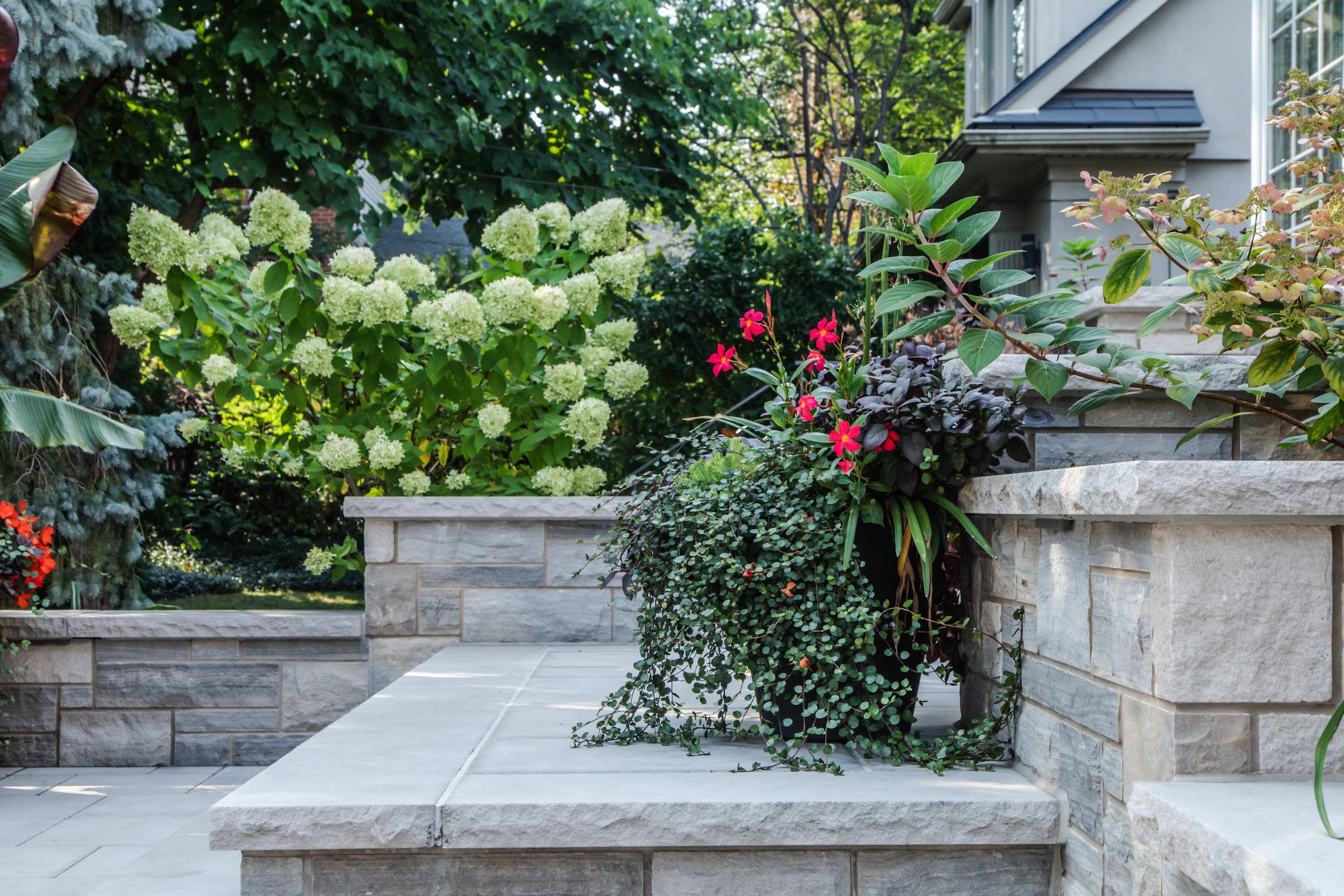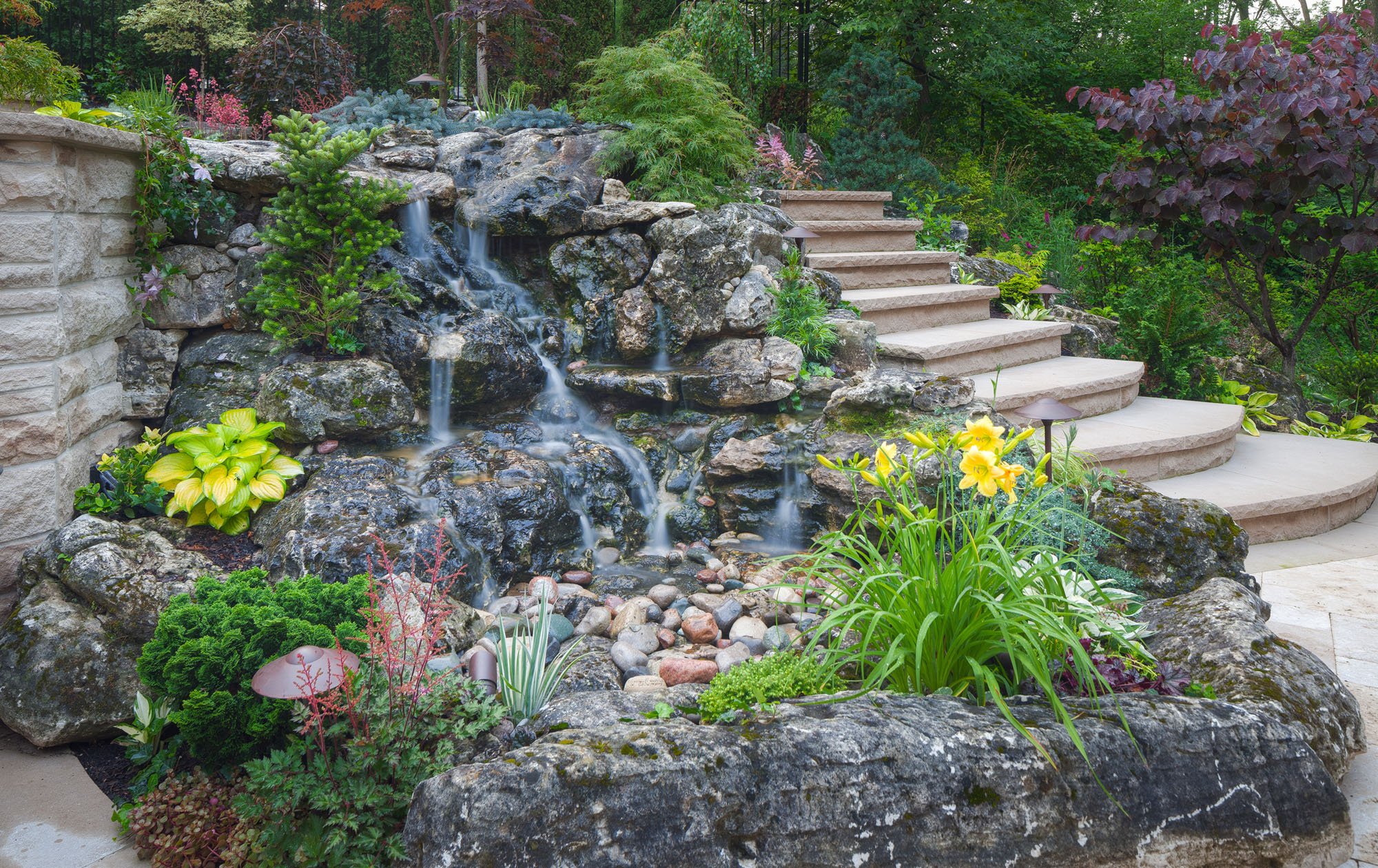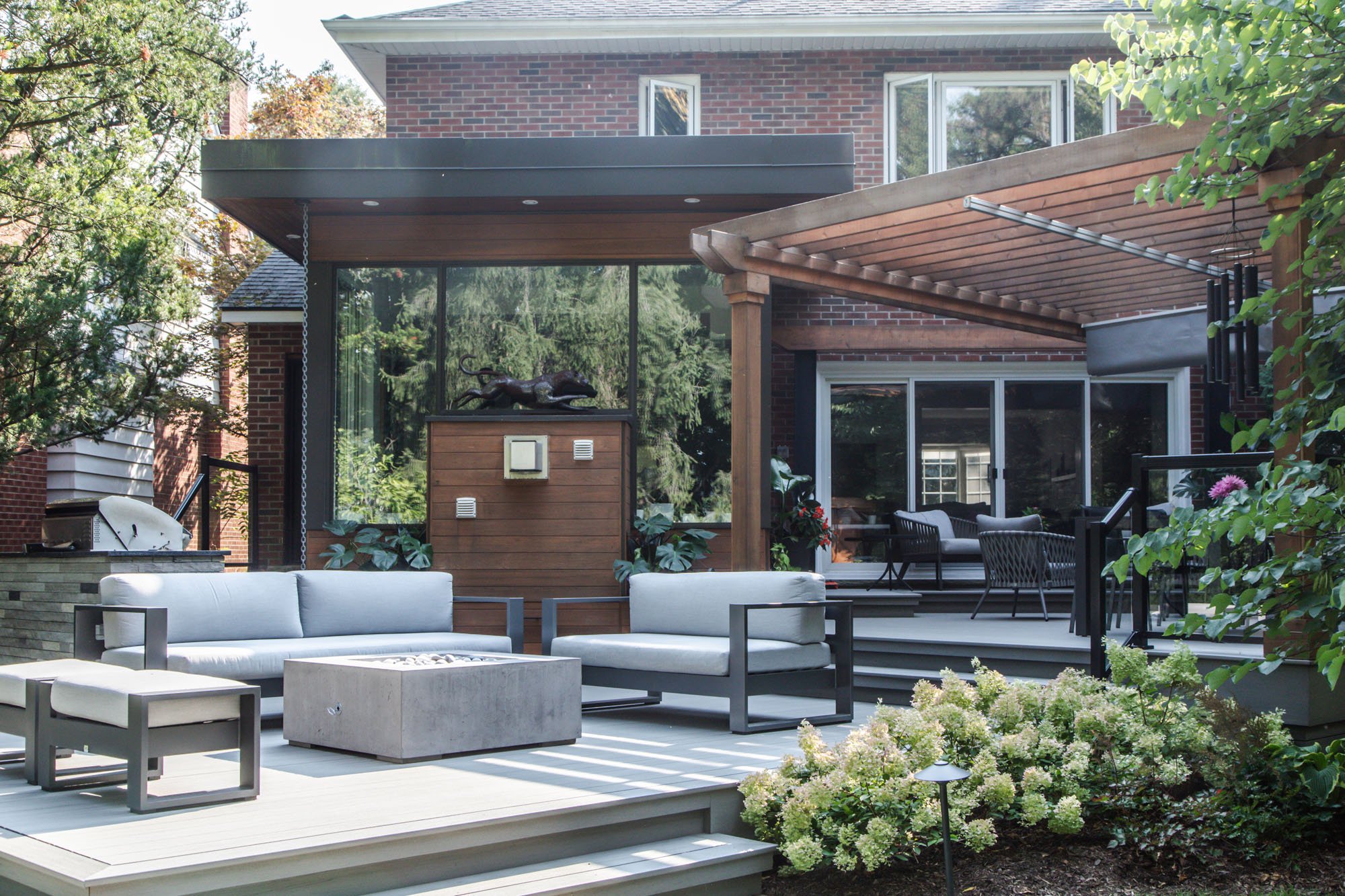
Redefining Outdoor Spaces
Transforming decks and landscapes into stunning, functional outdoor environments since 1986.
Our Services
Whether you're seeking a private retreat or an expansive outdoor space for entertaining, we’ll work with you to create a living area that perfectly fits with your lifestyle and seamlessly connects your home to the surrounding landscape.
Defining your deck’s purpose is the first step to creating a space that fits your lifestyle. Detailed plans and renderings are essential for visualizing your project, whether it’s a private retreat or an outdoor entertaining space. We’ll work with you to incorporate your ideas, ensuring the final design exceeds your expectations.
We specialize in thoughtful designs that enhance the beauty and value of your home. Paired with our expert craftsmanship, your outdoor space will become a daily sanctuary and a place where lasting memories are made.
Starting a landscaping project can feel overwhelming when you’re bursting with ideas but unsure where to begin. You might consider hiring multiple specialists to tackle different elements, but without a cohesive plan, the result can feel disconnected and piecemeal.
What you need is a landscape designer with vision—someone who will collaborate with you to bring your ideas to life in a seamless, balanced design that reflects both your lifestyle and available space.
At Paradise Landscape and Deck Design, we see nature’s endless possibilities. With decades of experience working with Southern Ontario’s diverse flora, our expert designers create sustainable, harmonious landscapes that blend effortlessly with your home’s natural surroundings—beautiful, enduring, and uniquely yours.
Landscape lighting design is both an art and a science, blending beauty with functionality. Thoughtful planning is essential to achieve a design that enhances your outdoor environment while meeting practical needs.
Our custom lighting solutions prioritize safety, accessibility, and security. For instance, steps and potential hazards are carefully illuminated with low-intensity lighting, ensuring your family and guests can navigate your space safely after dark. We also tailor our approach to factors such as the age and health of primary users, creating designs that are both thoughtful and inclusive.
Light has the power to transform how a space feels. By balancing aesthetics with purpose, we craft lighting designs that elevate your outdoor living experience, making your space as inviting after sunset as it is during the day.
Bring nature closer and enhance your property for years to come by incorporating permanent rocks and stones into your design.
Beyond their timeless appeal, landscaping rocks offer practical benefits: they regulate temperatures, create low-water, low-maintenance environments, and help manage uneven terrain. But effective rock landscaping is more than just laying stones—it’s about artistry. Our experts work with elements like shape, color, and texture to craft stunning designs that elevate your outdoor space.
Whether it’s a striking boulder feature, a natural flagstone patio, or a retaining wall, we blend creativity with your vision to craft a rock landscaping plan tailored to your needs and lifestyle.
These timeless architectural elements bring elegance, structure, and charm to any landscape—but achieving a truly harmonious design requires thoughtful planning and expertise.
Rooted in Victorian tradition, gazebos have evolved from purely decorative features to versatile spaces tailored to modern living. Whether envisioned as a serene space for reading a book, a shelter for a hot tub, or a refined setting for entertaining, gazebos can be customized to suit your lifestyle and breathe new life into your outdoor environment.
Pergolas, with their open, airy design, serve as both striking focal points and functional spaces. From framing a garden entrance to creating shaded, plant-draped sanctuaries, they offer endless possibilities for defining your outdoor space.
With a legacy of crafting bespoke gazebos and pergolas, we blend creative vision and technical mastery to design features that seamlessly integrate beauty, utility, and harmony into your landscape.
Your backyard oasis is always within reach. We combine thoughtful design with premium materials to create retaining walls that are functional, enduring, and harmoniously aligned with your existing landscape.
For sloping or uneven properties, a retaining wall can maximize usable space while addressing slope stability, soil type, and drainage for a solution that’s both safe and low-maintenance for you. Beyond practicality, retaining walls can also serve as striking design elements—anchoring your home’s surroundings or as independent focal points.
From natural stone to sleek prefabricated blocks; whether for necessity or aesthetics; we’ll help you select the perfect materials to transform your landscape with cohesion and elegance.
We also provide:
Outdoor Living Conceptual Plans
Project Management
Native Plantings Installation
Our Philosophy
At Paradise Decks and Landscape, we seek to create spaces that feel like an extension of your home. Our philosophy is to approach your outdoor environment as a whole, designing with both the big picture and the finer details in mind. From stunning decks and sweeping landscapes to intricate stone work; whether you want a place for gathering, entertaining or a personal sanctuary to escape the everyday – your perfect outdoor paradise awaits.
Areas We Serve
Hamilton
Burlington
Oakville
Mississauga
Toronto
Etobicoke

What our clients say about working with us:
My neighbour installed an elaborate deck last summer and had nothing but good things to say about the company they used, Paradise Decks. So when I spotted one of their crew members on our street one day, I approached him to inquire about getting a quote to replace our old, falling apart, too-small deck. The young man was so polite, and helpful, I was immediately impressed. He clearly liked working for this company.
I was put in touch with the owner, Adrian, who was super responsive and efficient in getting us a design. He gave us several options for many of the elements which put us in control of the amount we wanted to spend. It was a two story design and we chose to waterproof it so we could create a seating area underneath. We finished the ceiling in cedar which was a little pricey but so worth it…it’s beautiful! The railing is glass and looks great. Unfortunately one of the pieces of glass was delivered with a small chip in it but Adrian’s team ordered a new one and it has now been replaced. Every project has it’s little issues, but the key is how the team deals with them, and in our experience Paradise Decks is top notch.
The install team, led by Patrick, was excellent. It was a pleasure to have them on our property.
I would highly recommend Paradise Decks to anyone who wants an excellent quality project done with no headaches! Thank you Adrian !
Diane Williams
We hired Paradise Decks and Landscape to complete a large deck on our escarpment property. We spent months looking at different companies who could complete this project and we made the right decision with Paradise. They guided the design, the permits, and a flawless build! We will be using their team for future landscape needs.
Joseph Haroun
Paradise Desks and Landscape Design did an outstanding job on our side walkway and back patio. We had a very ratty looking small space with 2 sheds adjacent to a very muddy side walkway that needed the help of a designer to make it a beautiful space tying in the out building structures. The design was fantastic and the workmanship was first class. The various crews that came were delightful and very professional. Adrian and all his crew included our feedback and requests into the design and implementation process to create a space that is so comfortable, aesthetically pleasing, and extremely well built. We highly recommended them for any project!
Lisa Dargel
As a homeowner, one of the hardest things to do is to find a contractor you can trust. Five years ago, my husband and I were looking to rebuild an aging deck. Narrowing down a reputable company that matched our preferences was frustrating. Most of the friends and neighbours we consulted were lukewarm about their contractors. But Paradise Decks lives up to the name. They transformed our backyard into a paradise.
Adrian Simunovic, the owner of Paradise Decks, is primarily a deck builder, but in the winter he renovates interiors. This past Christmas he updated our “80s” kitchen into a modern wonder. And what can I say about our new bathroom that will do it justice? It is a work of art. Now that both projects are finished we feel like we are “livin’ the dream.”
Adrian and his team have a strong work ethic. They are true artists and craftsmen. They are also a family business that includes sons Anthony and Ehren, who are experts in woodcraft. It was amazing to watch them breathe new life into our outdoor living space. And then like magic witness Adrian’s talented team reconstruct our kitchen and bathroom with wood, tile and marble. Adrian’s designs are creative and original. In all the years he has been building decks, I don’t believe any two backyard plans are alike. His team—like himself—are a rare breed. He puts the customer first. He does not hesitate to address any concerns, and if anyone makes a mistake, they fix it. When a project starts, you are the priority. Someone will be there—every day—no lengthy delays.
We are very pleased with Paradise Decks. Both our backyard and interior remodels went quickly and with finesse. Everyone who stepped foot on our property was professional and polite, and always with a smile. They are eminently skilled at their work. It’s no wonder Paradise Decks is in such high demand.
Deborah Cannon






